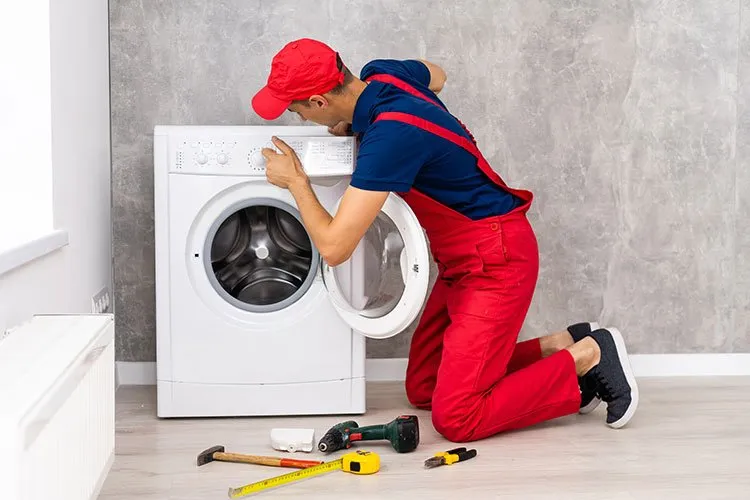Comprehensive Guide to Washing Machine Repair
Washing machines are an essential household appliance, making our lives easier by taking care of the laundry. However, like any other machine, they can break down and require repairs. This guide will help you understand common washing machine issues, troubleshooting steps, and when to call a professional for repair.
Common Washing Machine Problems
Washing Machine Won’t Turn On
One of the most frustrating issues is when your washing machine doesn’t turn on. This problem can be caused by several factors:
Power Supply Issues: Ensure the machine is plugged in and the outlet is working. Check the circuit breaker as well.
Door/Lid Switch Problems: If the door or lid isn’t properly closed, the machine won’t start. The switch might be faulty and need replacement.
Control Board Failure: The control board might be malfunctioning, requiring a professional diagnosis.
Water Leakage
Water leaking from your washing machine can damage your floors and walls. Common causes include:
Hoses: Check the water inlet and drain hoses for cracks or loose connections.
Door Seal: Front-load washers have a rubber seal that can wear out or get dirty, causing leaks.
Pump: A faulty pump can also cause leaks.
Strange Noises
Unusual noises during the wash cycle can be alarming. Possible reasons are:
Object Stuck in Drum: Coins, buttons, or other objects might be stuck in the drum.
Worn Out Bearings: Bearings support the drum and can wear out over time, causing a loud rumbling noise.
Motor Problems: A faulty motor can create grinding or squealing noises.
Machine Not Draining
If your washing machine isn’t draining properly, it could be due to:
Clogged Drain Pump: Lint, small clothing items, or debris can block the drain pump.
Blocked Hoses: Ensure the drain hose isn’t kinked or blocked.
Drain Pump Failure: The pump itself may be faulty and need replacement.
Machine Not Spinning
When your washing machine won’t spin, it can leave your clothes wet and heavy. Common causes include:
Unbalanced Load: An uneven load can prevent the machine from spinning. Redistribute the clothes and try again.
Drive Belt Issues: A worn or broken drive belt can prevent the drum from spinning.
Motor Problems: The motor or motor control board might be faulty.
Troubleshooting Steps
Check the Power Supply
Ensure the washing machine is properly plugged in and the outlet is functioning. Reset the circuit breaker if necessary.
Inspect the Hoses
Look for any cracks, kinks, or loose connections in the water inlet and drain hoses. Replace damaged hoses as needed.
Clean the Filters
Washing machines have filters that can get clogged with lint and debris. Regularly clean the filters to prevent blockages.
Balance the Load
Avoid overloading the machine and ensure the load is evenly distributed to prevent unbalanced loads that can cause the machine to stop spinning.
Check for Foreign Objects
Inspect the drum for any foreign objects that might be causing noise or preventing the drum from spinning.
When to Call a Professional
While some issues can be resolved with basic troubleshooting, certain problems require professional assistance:
Electrical Issues
If the machine has electrical problems, such as a malfunctioning control board or motor, it’s best to call a professional technician.
Major Leaks
Significant water leaks can cause extensive damage. A professional can identify and fix the source of the leak.
Complex Mechanical Problems
Issues like worn-out bearings, broken drive belts, or faulty pumps often require specialized tools and expertise.
Warranty Repairs
If your washing machine is still under warranty, contact the manufacturer or an authorized service provider to avoid voiding the warranty.
Preventative Maintenance Tips
Regular maintenance can extend the life of your washing machine and prevent many common problems:
- Clean the Machine: Run an empty wash cycle with vinegar or a washing machine cleaner monthly to remove soap scum and bacteria.
- Check Hoses and Seals: Inspect hoses and seals for wear and replace them as needed.
- Avoid Overloading: Follow the manufacturer’s recommendations for load size to prevent strain on the machine.
- Use the Right Detergent: Use high-efficiency (HE) detergent for HE machines to prevent excessive suds and residue.
Conclusion
Understanding common washing machine problems and basic troubleshooting steps can save you time and money. However, don’t hesitate to call a professional for complex issues. Regular maintenance is key to keeping your washing machine running smoothly for years to come.


